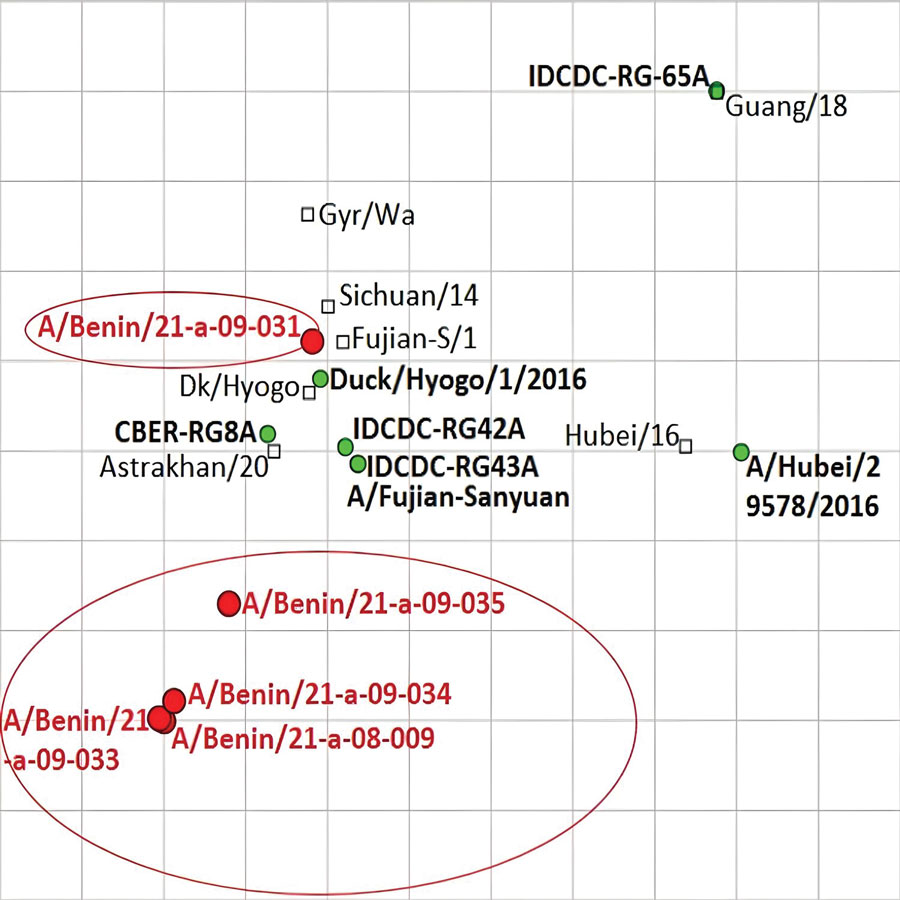Volume 28, Number 12—December 2022
Dispatch
Highly Pathogenic Avian Influenza A(H5N1) Clade 2.3.4.4b Virus in Poultry, Benin, 2021
Figure 2

Figure 2. Antigenic map of highly pathogenic avian influenza A(H5N1) viruses from Benin based on hemagglutination inhibition data (Appendix Table). Circles indicate viruses and squares antiserum; red indicates viruses characterized in this study, and green dots indicate reference viruses. The spacing between grid lines is 1 unit of antigenic distance, corresponding to a 2-fold dilution of antiserum in the hemagglutination inhibition assay.
Page created: November 15, 2022
Page updated: November 21, 2022
Page reviewed: November 21, 2022
The conclusions, findings, and opinions expressed by authors contributing to this journal do not necessarily reflect the official position of the U.S. Department of Health and Human Services, the Public Health Service, the Centers for Disease Control and Prevention, or the authors' affiliated institutions. Use of trade names is for identification only and does not imply endorsement by any of the groups named above.